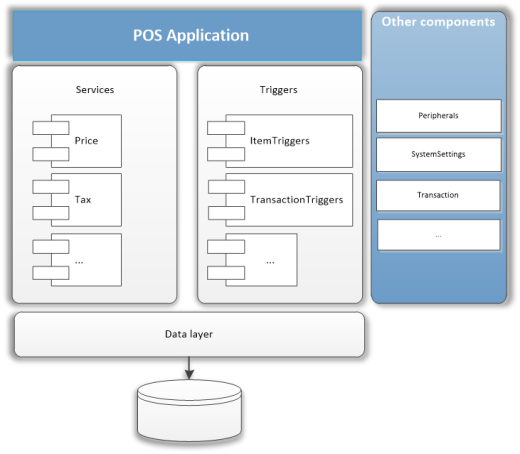LS One POS Architecture
 The LS One POS is a powerful system structure based on a layered, service oriented architecture, including an isolated system core. All localized business logic and special adaptations are contained in exchangeable modules.
The LS One POS is a powerful system structure based on a layered, service oriented architecture, including an isolated system core. All localized business logic and special adaptations are contained in exchangeable modules.
The main structure of the LS One POS includes the application itself, services and triggers. As displayed in the image both the POS application and the exchangeable modules have access to the same settings: security, logging and exception handling. All services and components of the LS One suite use the same datalayer so once it has been changed in one place the same properties and/or changes are available in both the LS One POS and Site Manager for example.
In the the following topics, each service is described and explained as well as the function and purpose of the Triggers
User interface
The user interface is crated with the aim of being one of a kind. It offers the dynamic functionality of user interface components. The till's appearance can be customized for different purposes and there are several different layouts of user interface components available.
When starting, the LS One POS first checks if the member of staff logging in has a specific user interface assigned to them, if not then the terminal configuration is checked and lastly, the store. By doing this, the POS offers a different user interface for the manager and cashier and also between terminals, so the terminal at the door could have a different layout that the rest of the terminals in the store.
Because each terminal has a hardware profile attached to it, using different hardware within the same store is an option. This can be the difference between the entire terminal hardware of just each terminal having different printers such as onen use NCR, the second and Epson printer, and the third a windows printer.

